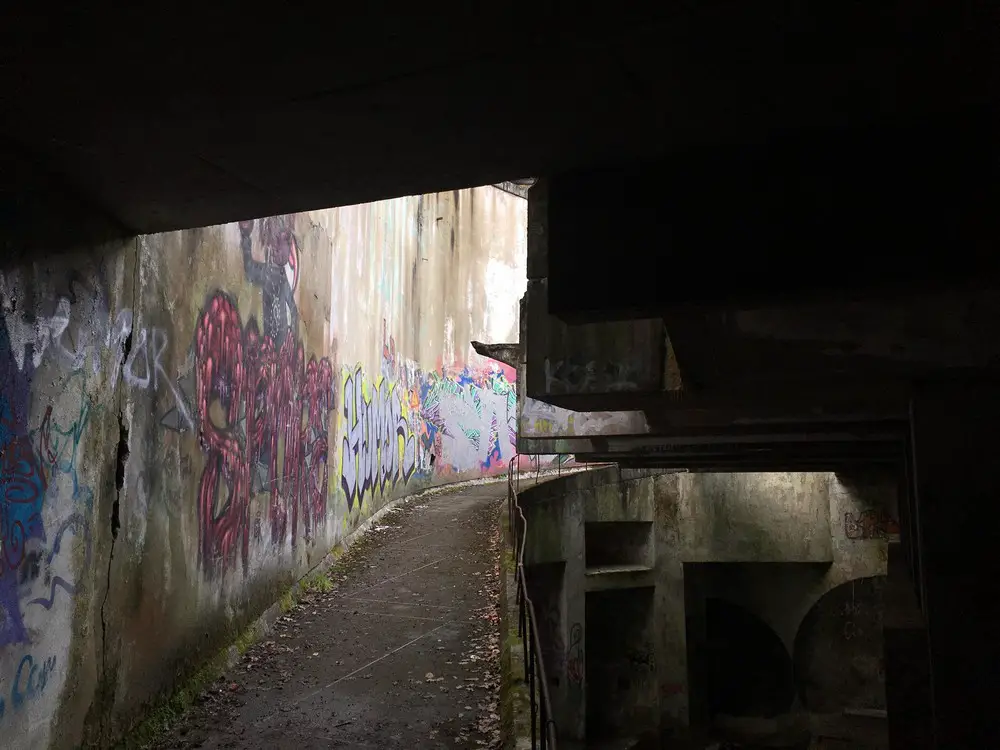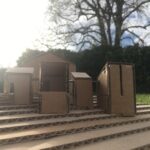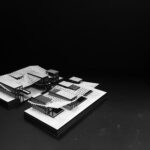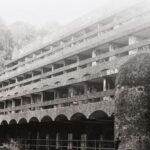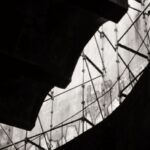Saint Peter’s Seminary Cardross Study Part Four, Modern Scottish Architecture, Architectural Education Dissertation
Saint Peter’s Seminary Cardross Building Study Part 4
29 November 2021
Third Year Architectural Dissertation by Daniel Lomholt-Welch, Scotland
Daniel Lomholt-Welch
Architecture MA(Hons) Dissertation
Saint Peter’s Seminary Cardross Building – Set Apart: An Argument over Meaning
4. Set Apart: An Argument over Meaning
In his book titled The Sacred and the Profane (1957), the Romanian historian of religion Mircea Eliade introduces his theory of how we experience the sanctity of space. He seeks to create a dichotomy between the ‘homo religiosus’ (religious man) and the ‘homo a-religiosus’ (non-religious man) by investigating how they perceive the spatial aspect of the world. The theory contends that the homo religiosus is synonymous with primitive man, while the homo a-religiosus is comparable to the modern man that dwells in the secular world. This sharp distinction suggests a historical break between the two modes of being in the world. Eliade asserts that for the homo a-religiosus the world is experienced as homogenous uniform neutrality, whereas for the homo religiosus this was not the case. For him, the world is experienced as having a sacred centre (or centres) which he seeks to inhabit. This sacred centre leads to the artifice of the homo-religiosus as being an ‘imago mundi’, the representation of the cosmos upon the ground which is centred upon the ‘axis mundi’ discussed in the previous chapter.[1] Therefore at this juncture of imago mundi and axis mundi there exists an opening between cosmic levels, equating to what Eliade claims is the founding of a world.[2] What is critical to Eliade’s theory is the term ‘hierophany’, the manifestation of the sacred. Etymologically this can be traced back to mean ‘to bring the holy to light’, as opposed to the commonly used ‘to bring God to light’ which shares notions of idolatry.[3] A hierophany such as a sacred tree is not worshipped due to its qualities as a tree, but for its ability to show something other than its objective self, at least to those who perceive the tree to do so. He ventures to say that everything within the cosmos, even the cosmos in its entirety, could become a hierophany.[4]
Eliade’s theory is problematic for a number of reasons. Firstly, it creates a duality between the lived experience of the homo religiosus and the homo a-religiosus based on the notion that the former is attuned to be able to perceive a hierophany, and the latter is not, therefore experiencing the world as meaningless. He elucidates that for a profane experience of the world there are no qualitative interruptions, no ways of truly differentiating one space from another, and that we need only recall the Euclidean fundamentals of space.[5] This dogmatic view places a highly objective value on what would be defined as ‘meaningful’, denying it to the homo a-religiosus, and granting it only to the homo religiosus. However, others such as the philosopher Larry Shiner would argue against this, retaliating that there is no distinction between the value of the meaning experienced by the two, and pointing towards a difference in the nature of the meaning instead. This difference in nature suggests that sacred and profane space stand as polarities of the primary human environment, which Shiner calls ‘lived space’.[6] This lived space constitutes a blend of the sacred and profane space, thus placing more weight on the subjective perception of those that inhabit the environment. Eliade seems to portray those among mankind that are pious as another species, divorced from the rest of humanity by virtue of their beliefs. Does the homo a-religious too not seek answers to the fundamental existential questions? Surely what is distinct are not the motives, but the approaches.[7]
Saint Peter’s Seminary is a building through which it is possible to explore this debate. As a site of desacralisation, Eliade would see it as an illustration of a wider trend across society, a trend which makes it increasingly difficult to take on the existential dimensions that the homo religiosus had in archaic civilisations. Eliade believed that something that is desacralised is profane, resulting in the definition of Saint Peter’s as a profane space.[8] But this statement is one that denies importance to the beliefs of the individual as opposed to the official declaration of the religious organisation. It is clear to see from looking at the experiences of those who visit the Seminary in its ruined state that many still find it to be a profound space giving rise to profound experiences, despite the profane natures of the perceiver and the environment.[9] This counteracts Eliade’s notion of hierophanies being the basis for all sacred space, and while it would be hard to find many that still regard the abandoned building as sacred, it is clear that it often evokes a certain reaction from those that experience it. The art-historian Marie Clausen postulates that we live in a society that is still, contrary to Eliade’s theory, comprised of existential beings, and therefore it follows that we still have a need for existential buildings, ‘for existential thoughts made manifest materially.’[10] She elaborates that certain sacred buildings can be experienced by people of any belief, or non-belief, as being existentially sacred.[11] Saint Peter’s arguably goes beyond this statement on the basis of its faded sanctity, and begs the question whether this is not possible of forms of architecture other than the sacred.
Clausen goes on to investigate this possibility by looking at the example of cultural buildings that have little to no religious significance, such as libraries or art galleries. She claims that such buildings seem to want to reach through to our souls via our minds, whereas a church seems to suggest the possibility of conversing with our souls through our senses.[12] This standpoint is potentially due to historical connotations of libraries and art galleries as places of learning, thus knowledge, contrasting churches which may hold connotations of rituals and embodiment, thus the senses. This dichotomy is echoed by Jean-Luc Nancy, but he develops this hypothesis by stating that it is the union of knowing and sensing that gives rise to experience.[13] It is at this point of union that I would place Saint Peter’s, as a space of experience. As a reservoir of historical culture and a building which is constantly covered and re-covered by art, it certainly attempts to converse with our soul via our minds, to borrow the terminology of Clausen. And through its traces of sanctity one could say that it also attempts to converse with our soul through our senses. Therefore, it stands at the intersection of knowing and sensing, and could indeed be seen as space of experience. Of course, the unconventionality of its component parts that give rise to this definition continue to haunt it within this fusion of terms. It is an unconventionality that one could describe as ‘otherness’. Clausen herself notes that in this otherness lies a great deal of what one would consider attractive, even meaningful, about a space. She advocates the importance of counterpoints in life that allow us to escape from an otherwise ubiquitously mundane reality, finding in their otherness a sense of liberation.[14]
Reflecting on this notion, it is worthwhile to contextualise it in terms of Eliade’s definitions of sacred and profane space. It is clear that both Eliade and Clausen consider sacred space to be set apart, at least to an extent.[15] However it is unclear as to how much further the common ground extends between their ideologies. For Eliade, the idea that a person with no religious beliefs, a homo a-religiosus, could find meaning of any sort in their homogenous neutrality of existence is unthinkable, reserving the ability to achieve meaning for the homo religiosus alone. This objective dichotomy is not shared by Clausen, who defends the potential for all humans to attain meaning in their lives regardless of their sacred beliefs, or lack thereof. But in her development of the notion of counterpoints and otherness in our lives she does form a duality within human existence based on the division between the experiences we have in the normal and abnormal places that make up our reality. In actuality, this shares the same priority of meaningful centres as opposed to the supposedly uniform mundane space that forms the remainder of our physical reality. The only difference is that Eliade places an objective distinction on the ability to perceive these differences between the homo religious and homo a-religiosus, whereas Clausen does not.
[1] Eliade, Mircea. The Sacred and The Profane, trans. Willard R. Trask (New York: Harcourt, 1959), 20.
[2] Larry E. Shiner, ‘Sacred Space, Profane Space, Human Space,’ in Journal of the American Academy of Religion 40, no. 4 (December 1972), 426.
[3] Levi Clancy, ‘Mircea Eliade: The Sacred and the Profane: The Nature of Religion,’ Student Reader, last modified April 2017, https://studentreader.com/JXZNL/eliade-the-sacred-and-the-profane/
[4] Eliade, The Sacred and the Profane, 12.
[5] Eliade, The Sacred and the Profane, 22.
[6] Shiner, ‘Sacred Space, Profane Space, Human Space,’ 426.
[7] Marie Clausen, Sacred Architecture in a Secular Age (New York: Routledge, 2016), 150.
[8] Eliade, The Sacred and the Profane, 13.
[9] Refer to survey
[10] Clausen, Sacred Architecture in a Secular Age, 158.
[11] Clausen, Sacred Architecture in a Secular Age, 158.
[12] Clausen, Sacred Architecture in a Secular Age, 2.
[13] Marie Morin, Jean-Luc Nancy, 81.
[14] Clausen, Sacred Architecture in a Secular Age, 2.
[15] Clausen, Sacred Architecture in a Secular Age, 96.
Saint Peter’s Seminary Cardross Study – introduction
Saint Peter’s Seminary Cardross Study Part 1
Saint Peter’s Seminary Cardross Study Part 2
Saint Peter’s Seminary Cardross Study Part 3
Saint Peter’s Seminary Cardross Study Part 5
Saint Peter’s Seminary Cardross Study Conclusion
Saint Peter’s Seminary Cardross Study Dissertation by Third Year Student at Edinburgh School of Architecture information / images from Daniel Lomholt-Welch
Edinburgh School of Architecture Student Projects
e-architect are following the progress of architecture student Daniel Lomholt-Welch during his degree studies at Edinburgh University.
Second Year Student Projects at Edinburgh School of Architecture
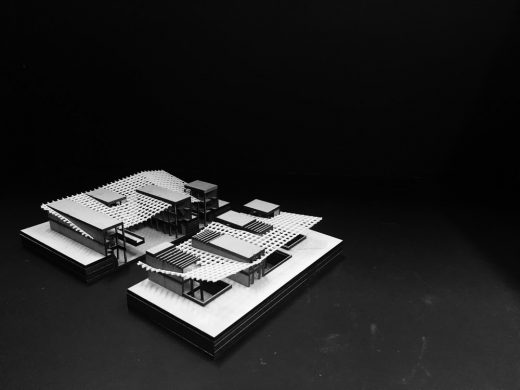
Second Year Student Projects at Edinburgh School of Architecture
First Year Student Projects at Edinburgh School of Architecture
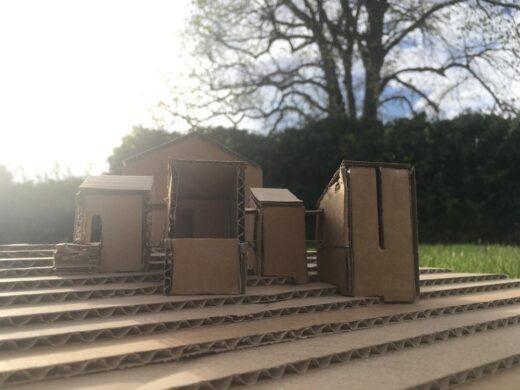
image courtesy of D L-W
First Year Student Projects at Edinburgh School of Architecture
Education Building Designs
New Macallan Distillery in Speyside
Design: Rogers Stirk Harbour + Partners (RSHP)
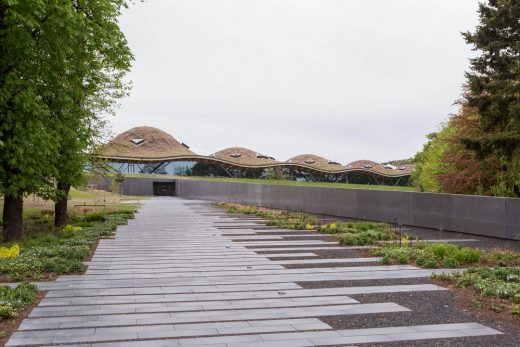
photo © Simon PricePA Wire
Architecture and Landscape Architecture | Edinburgh College of Art
Comments / photos for the Saint Peter’s Seminary Cardross Study Part 4 page welcome

